The Finals Tournament Structure: Formats, Rounds & Progression
Updated On: October 23, 2025 by Aaron Connolly
Overview of The Finals Tournament Structure
The Finals sets itself apart with a wild 3v3v3v3 Cashout Tournament format. Eight teams—so, 24 players—go head-to-head in elimination rounds, and only one squad survives to the end.
This setup creates chaotic, multi-team fights that feel way different from the usual one-on-one esports showdowns. You get both sweaty ranked play and a more relaxed World Tour mode.
Key Components
Everything revolves around Cashout Tournaments, where four teams of three try to steal and defend Cashout stations. Teams rack up cash by grabbing vaults and taking out rivals.
They run each tournament as a knockout. The top two teams in every round move forward, and it all leads up to a final brawl between the last two.
Two Main Modes
Ranked Tournament is for the hardcore folks. Random events? Gone. If your team gets wiped, you lose a chunk of your cash. No swapping loadouts mid-round—you have to wait until the next one.
World Tour is the casual playground. You get weekly rotating events and sponsor challenges. Teams can switch loadouts after death, and sometimes you’ll get silly modifiers like dance-offs for bonus cash.
Progression Systems
In Ranked, you climb using Rank Score (RS), landing somewhere between Bronze and Ruby. Only the top 500 players worldwide grab that Ruby rank.
World Tour hands out Win Points based on where you finish. Win a tourney? You get 25 points. Make it to round two? That’s six. There are six badge tiers, and you never lose points for a bad game.
Significance in Esports
The Finals’ structure ramps up the tension with its four-team format. Instead of just fighting one opponent, you’ve got to decide when to get in a scrap and when to hang back.
Ruby rank players chase spots on the global leaderboard, so there’s a real path for anyone who wants to go pro. Only the best break into the top 500.
Skill Development
The knockout format forces teams to balance risk and survival. If you get eliminated, you’re out for good—no second chances.
Ranked mode’s no-nonsense rules get players ready for the big leagues. No random events, no mid-round changes—just pure competition, like you’d see at major tournaments.
Unique Elements
Multi-Team Dynamics
This 3v3v3v3 setup throws in situations you just won’t find in other games. Teams sometimes team up (for a second, anyway), pick who to fight, and can swoop in to third-party someone else’s fight.
It’s not all about aim—good positioning and knowing when to push or hold back really matter.
Destruction-Based Gameplay
You can blow up the battlefield to change things on the fly. Knock down walls, open new paths, or ruin someone’s cover—destruction is a big part of the strategy.
Weekly Event Rotation
World Tour keeps things fresh with sponsor events. You might get more points for using tough weapons in “Risk & Reward,” or have to emote on the dance floor for cash in “Strike A Pose.”
These twists stop the meta from getting stale but still stick to the core tournament vibe.
Tournament Format and Rounds
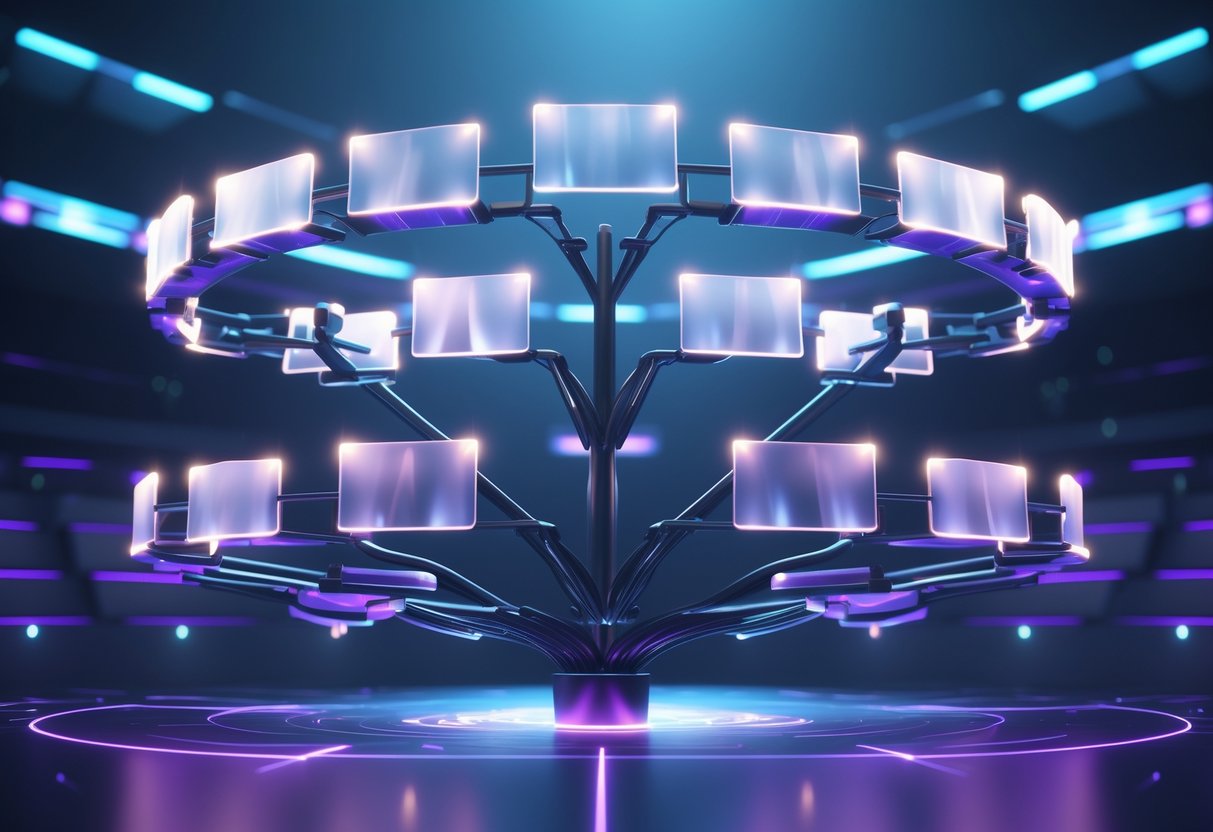
The Finals throws eight teams into a 3v3v3v3 Cashout format. If you’re new, you have to finish qualifying requirements before you get your starting rank.
Qualifying Rounds
Before you can dive into ranked, you need to finish qualifying rounds. The game wants you to play 60 rounds in any mode first.
This lets you pick up the basics and get comfortable.
Quick win: Use casual games to try different loadouts and learn the maps while you qualify.
The system gives new players a buffer, so you don’t get thrown into the deep end. Most folks finish this in their first week.
Once you hit 60 rounds, you unlock placements. Think of it as your warm-up before the real deal.
Placement Rounds
Placement rounds decide your starting rank. You play four matches against other players, and the system keeps a close eye on how you do.
Your placement depends on a few things:
- How far your team gets in the tournament
- Your own stats
- The skill of the teams you face
- Cash earned from good plays
Heads up: Even if you crush it, you probably won’t start higher than Gold.
Most new players land somewhere between Bronze and Gold. The game plays it safe at first, but you can always climb with more games.
Placement matches use the same knockout format as ranked. Eight teams battle, and only one comes out on top.
Knockout Rounds
The main tournament structure puts eight teams—24 players—in elimination rounds. Only the top two per round move on. It’s intense, and every round counts.
How it works:
- Round 1: All eight teams
- Semi-finals: Four teams left
- Finals: The last two fight for the win
Teams earn cash by opening vaults, cashing out, and getting eliminations. Tip: In ranked, if your team gets wiped, you lose a chunk of cash, so sometimes it’s smarter to bail from a bad fight.
This knockout style is harsh—one bad round and you’re out. There’s no round robin safety net, so every play really matters.
Seeding and Team Progression
Teams move up in The Finals using a skill-based bracket system. Your rank and performance—not luck—decide your path.
Seeding Methods
The Finals uses a skill-based matchmaking system. It places you in brackets based on your current rank and how you’ve been playing lately.
Unlike old-school seeding, this one adjusts all the time. Wins, losses, and how well you help your team matter.
Main seeding factors:
- Your current rank (Bronze to Diamond)
- How you’ve done in recent matches
- Win or loss streaks
- How well your team works together
The game looks at your performance over several matches. One bad game won’t ruin your seeding.
Quick tip: Stay consistent. Teamwork and finishing objectives matter more than one flashy round.
Your bracket decides who you’ll face next. Higher ranks get tougher matches, but you also earn more points for winning.
Progression Systems
Players move up by earning Tournament Points in Ranked. Each tier needs a certain number of points to unlock the next one.
Rank tiers:
- Bronze: Entry level, point losses are mild
- Silver: Competition gets tougher
- Gold: Higher skill, more at stake
- Diamond: Top players, big pressure
Heads up: Losing hurts more in higher tiers. A bad streak can drop you fast.
There’s also rank decay if you stop playing for a while. Diamond players have to stay active or they’ll get bumped down.
Seasonal resets happen every few months. Everyone goes back to provisional matches, so new players get a shot and old ones can’t rest easy.
Most players find their real rank after 50-100 matches. After that, climbing takes real effort.
Divisions and Pools
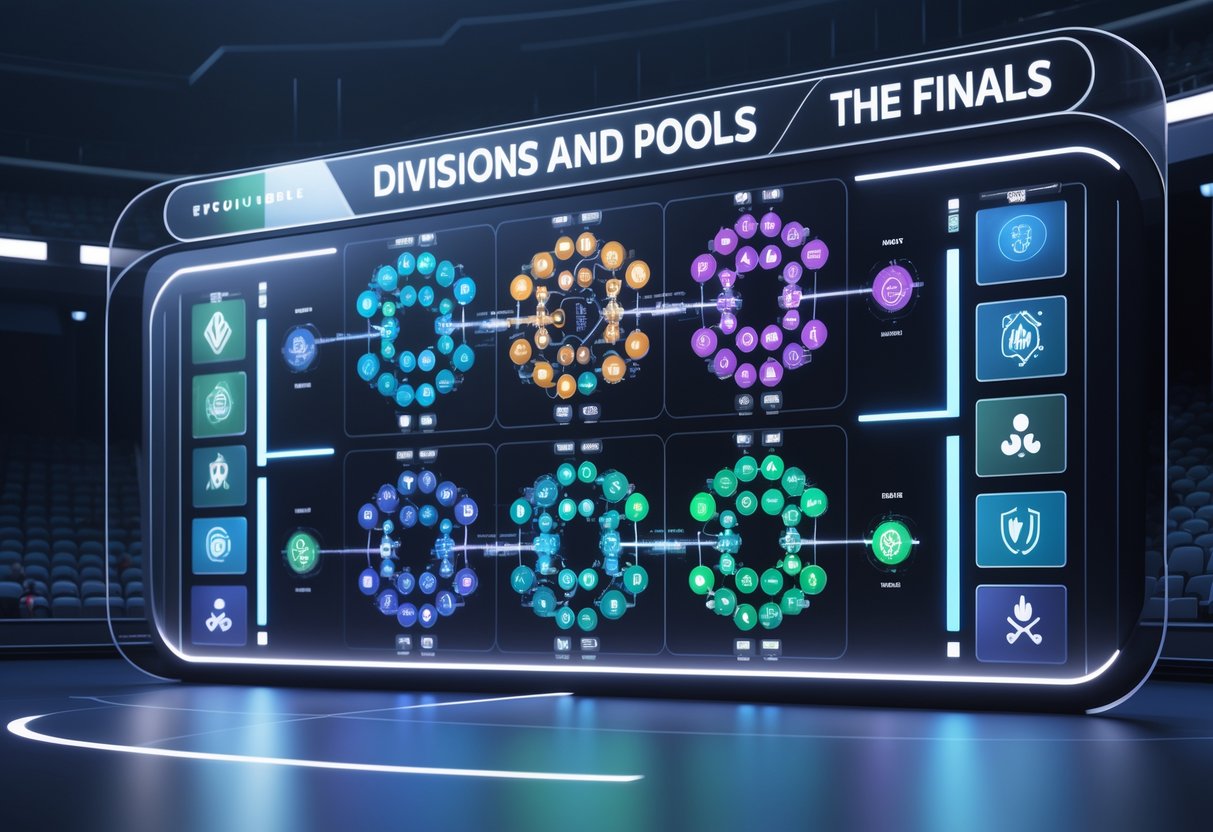
Tournament divisions split up teams by skill and experience. Pools keep matches fair within each division, so you’re fighting folks at your level.
Division I Explained
Division I is the top of the ladder in The Finals. Only the most skilled and experienced teams make it here.
Teams earn their spot in Division I by crushing it in lower divisions. The ranking system tracks your wins, placements, and overall progress.
Division I perks:
- Bigger prize pools
- Tougher, more competitive matches
- Stricter entry requirements
- More recognition
Most tournaments have several divisions besides Division I—Bronze, Silver, Gold, Platinum, Diamond, and Ruby. It’s a full ladder.
Teams can move up or down depending on how they play. Good results boost you, bad ones drop you.
Pool Allocation
Organizers use pools to spread teams out fairly. This avoids lopsided matches and keeps things interesting.
How they sort pools:
- Skill-based: Teams grouped by rank
- Regional: Keeps latency low
- Random: Sometimes it’s just luck of the draw
The Finals usually runs 8-team tournaments with set pool structures. Teams battle through knockouts, and the best move on.
Pool sizes change depending on the event. Big tournaments might have 16 or 32 teams per pool, but most stick to eight.
Organizers watch for skill gaps and tweak future pools if needed.
Advantages of Divisions
Divisions make sure you’re playing against people at your level. New players don’t have to worry about facing pros right away.
Biggest benefits:
- You get to learn and improve at your own pace
- More people join in since it’s less intimidating
- Clear goals for moving up
- Matches stay close and fun to watch
Divisions keep people coming back. Teams can set goals that make sense for them, instead of just getting stomped by the best.
Rewards scale with your division. Bronze teams get prizes that feel good for their level, while Division I teams chase the big rewards.
This setup helps The Finals grow. New players get a fair shot, and top players still have high-stakes competition.
Structure of the Playoffs
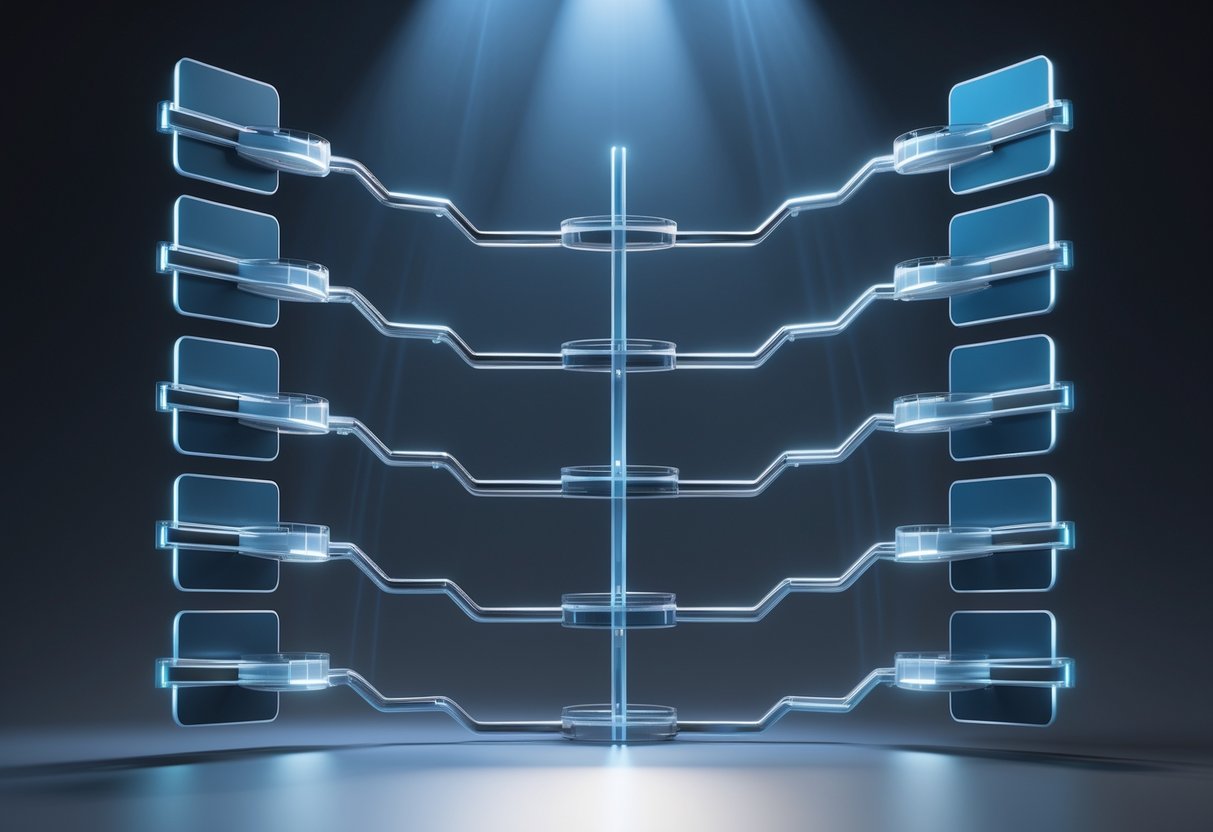
The NBA playoffs run as a 16-team elimination tournament. Eight teams from each conference fight through four rounds of best-of-seven series.
Teams qualify through the play-in or regular season standings before jumping into the bracket.
Playoff Qualifications
The NBA picks 16 playoff teams with a two-step process. The top six in each conference get in automatically, based on their regular season records.
Teams ranked 7th to 10th battle in the play-in. The 7th and 8th seeds have two shots to qualify, but 9th and 10th get just one chance.
The play-in lasts four days in mid-April. Winners grab the last two playoff spots as the 7th and 8th seeds.
Play-In Format:
- 7th vs 8th: Winner gets 7th seed
- 9th vs 10th: Winner plays loser of 7-8 game
- Last game decides the 8th seed
Elimination Playoffs
The elimination rounds are all best-of-seven. Teams have to win four games to move on, so every match feels huge.
The Four Rounds:
- First Round: 16 teams drop to 8
- Conference Semifinals: 8 become 4
- Conference Finals: 4 become 2
- NBA Finals: Last two fight for the title
Higher seeds get home-court advantage—they host Games 1, 2, 5, and 7 in a 2-2-1-1-1 setup.
Each round usually takes one or two weeks. Teams face the same opponent the whole round, which means lots of tactical changes.
The bracket never reseeds. Upsets can shake things up, and top teams might meet before the Finals if things get wild early on.
Bracket Systems and Elimination Styles
The Finals switches up bracket formats depending on the tournament phase. For open qualifiers, organizers stick to single-elimination, but major events get a bit more creative with hybrid systems.
Teams experience different levels of forgiveness. Sometimes, one loss sends you packing, while other times, wild card entries give you another shot.
Single-Elimination Structure
Single-elimination brackets are brutal—lose once and you’re out. It’s basically a knockout cup, and every match feels like it’s do-or-die.
The Finals Open Qualifiers follow this exact approach. Teams jump in for best-of-three matches, and only eight teams move on to closed qualifiers from each one.
Pressure ramps up fast in this format. One off game can erase months of work.
Teams usually play more cautiously because there’s no safety net.
Key Features:
- Winners move forward, losers are out immediately
- Fastest way to finish a tournament
- Maximum drama and tension
- Fewer matches overall compared to other systems
Most open qualifiers pick this format. It’s easy to follow and makes for clear, memorable storylines.
Double-Elimination System
Double-elimination gives teams a second chance by splitting things into upper and lower brackets. If you drop from the winner’s bracket, you’re not out—you just land in the loser’s bracket.
After the first round, the bracket splits. Winners stick to the upper bracket, while losers move to the lower one.
A team can lose once and still win the whole tournament.
How it works:
- Upper bracket: teams that haven’t lost yet
- Lower bracket: teams with one loss
- Grand final: upper bracket winner faces lower bracket survivor
You’ll see this format at many major esports events. It balances out fairness and keeps things exciting for viewers.
The lower bracket often sets up amazing comeback runs. Some teams even play better after a loss, maybe because the pressure changes.
Wild Card Entry
Wild card systems let extra teams join tournaments, even if they didn’t qualify the usual way. Organizers often hand these spots to fan favorites, regional reps, or last-chance qualifiers.
The Finals APAC region does this well. Three Asia-Pacific teams get guaranteed slots through separate qualifiers, so the region always has a presence at The Grand Major.
Wild cards serve a few purposes:
- Regional balance: every area gets a shot
- Viewer interest: fans see their favorite teams
- Last chances: bubble teams get final opportunities
Some tournaments give wild card spots to defending champs or top-ranked teams that stumbled in qualifiers. This way, big names aren’t knocked out by early upsets.
Wild card teams often create the best stories. Underdogs with something to prove sometimes go way farther than anyone expects.
Match Formats in The Finals
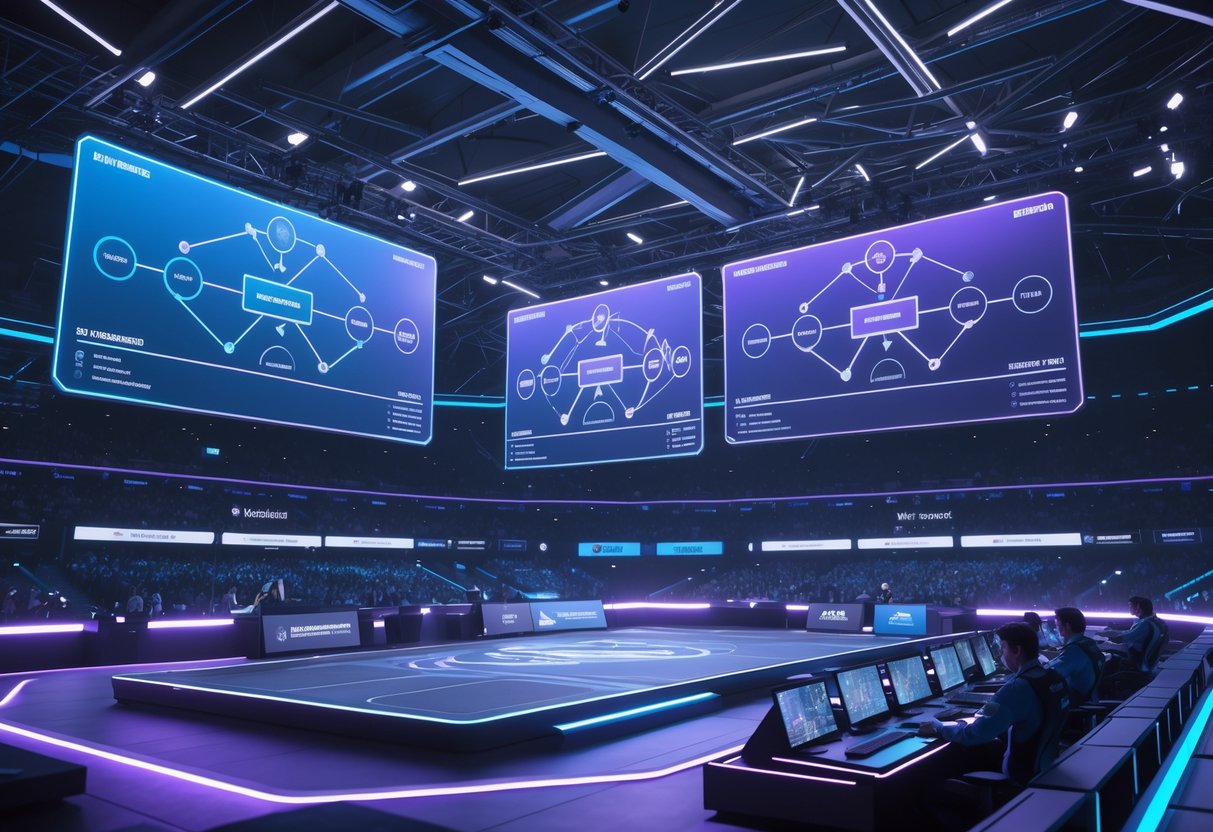
The Finals uses two main competitive formats, each testing teams in different ways. The best-of-three series piles on knockout pressure, while the double round robin rewards teams that stay consistent over time.
Best-of-Three Series
You’ll find the best-of-three series in The Finals’ ranked tournament mode. Teams need to win two out of three matches to move on.
The stakes feel high in these matches. One bad game won’t end your run, but two losses send you home.
Teams can adjust their strategies between games. They might swap loadouts or try new tactics.
Each match follows these rules:
- Four teams per match
- Top 2 teams advance
- Limited respawn credits each round
- No weapon swapping during a round
The psychological side is huge here. Teams that lose the first match feel the heat right away.
Teams that win early can play it safe or get creative.
This setup really favors teams with mental resilience. They bounce back from mistakes and adapt quickly.
Double Round Robin Approach
Double round robin means every team faces each opponent twice in the group stage. It’s a more thorough test of skill.
Teams play home and away matches against every rival. This format doesn’t let one bad game ruin your whole run and rewards teams that keep performing well.
Key advantages:
- More matches mean fairer results
- Teams can study and counter opponents
- Reduces random knockouts from a single bad match
- Builds rivalries through repeat encounters
This works best for league-style competitions. Teams get familiar with each other, which leads to deeper strategies and more exciting rematches.
Teams need to prepare for lots of different opponents. Maintaining focus over many matches is tough.
Ranking System and Leagues
The Finals runs a five-tier league system. Fame Points decide how you move up from Bronze to Diamond.
Each league offers permanent rewards, and once you climb to a new league, you can’t drop back down.
League Tiers
Players start in Bronze 4 and work through Bronze 3, 2, and 1 before hitting Silver. Every league follows this four-tier structure.
Bronze League
- Bronze 4 (starting point)
- Bronze 3
- Bronze 2
- Bronze 1
Silver League
- Silver 4
- Silver 3
- Silver 2
- Silver 1
Gold, Platinum, and Diamond use the same progression. You’ll need a certain number of Fame Points to move up each time.
There’s also a sixth league—Ruby—for the top 500 players each season. That’s where the very best end up.
Quick win: Aim for the second knockout round consistently instead of always pushing for first place. It’s a more reliable way to climb.
Point Allocation
Fame Points (FP) drive your league progress in The Finals. You earn them for how far your team goes in tournaments and how much cash you grab in each round.
How you earn Fame Points:
- Win a whole tournament: 600+ points
- Make the finals: lots of points
- Get to the second knockout round: decent points
- Lose in the first round: Negative points (the only way your total goes down)
Your rank changes how many points you get. Higher ranks pay out less for the same achievements, letting lower-ranked players catch up faster.
Heads up: Only a first-round loss drops your rank—everything else helps you move up.
Rank Rewards
Every league gives you permanent cosmetic rewards you’ll keep forever. These show off your competitive milestones to other players.
Permanent League Rewards:
- Gold League: Golden M60 weapon skin
- Platinum League: Platinum XP-54 weapon skin
- Diamond League: Diamond FCAR weapon skin
Bronze and Silver don’t have permanent rewards, but you’ll still get seasonal cosmetics like weapon charms and character options.
All rewards arrive at the end of each season. Once you hit a league like Platinum, you’ll never get dropped back to Gold, no matter what.
Next up: Play your placement matches, get ranked, and aim for Gold to snag your first permanent skin.
Practice and Preparation

Players have to meet certain requirements to enter The Finals ranked tournaments. The best players combine regular training with smart preparation.
Requirements for Participation
You’ll need to finish at least 60 rounds before you can jump into ranked tournaments.
This rule helps make sure you actually know the game. New players often struggle with the destruction system and teamwork if they skip this step.
Try to play these rounds in different game modes. That way, you’ll learn maps and get a feel for weapon handling.
A lot of people just rush through casual matches, but that won’t help you improve much.
Quick win: Use the Practice Range to test new builds between matches. This special area lets you mess around with weapons, gadgets, and specializations without any pressure.
You’ll find training dummies and structures in the practice area. It’s a good spot to sharpen your aim and try out destruction mechanics.
Most top players spend a bit of time here every day.
Practice Methods
Regular practice is the backbone of tournament success. Combine team drills with solo training for the best results.
Solo practice hones your basic skills. Work on aim, movement, and weapon control for 15-20 minutes a day.
Team practice builds communication and coordination. Schedule time with your squad to practice callouts and run through strategies.
A lot of successful teams practice together for a few hours each week.
Pick one skill to focus on each session. Maybe one day you work on destruction, another on positioning and teamwork.
Watch pro gameplay between your own sessions. See how top teams handle different situations and try to adapt those ideas.
Map knowledge is huge. Learn angles, destruction points, and rotation routes—this stuff really matters in tense matches.
Major Tournaments and Special Events
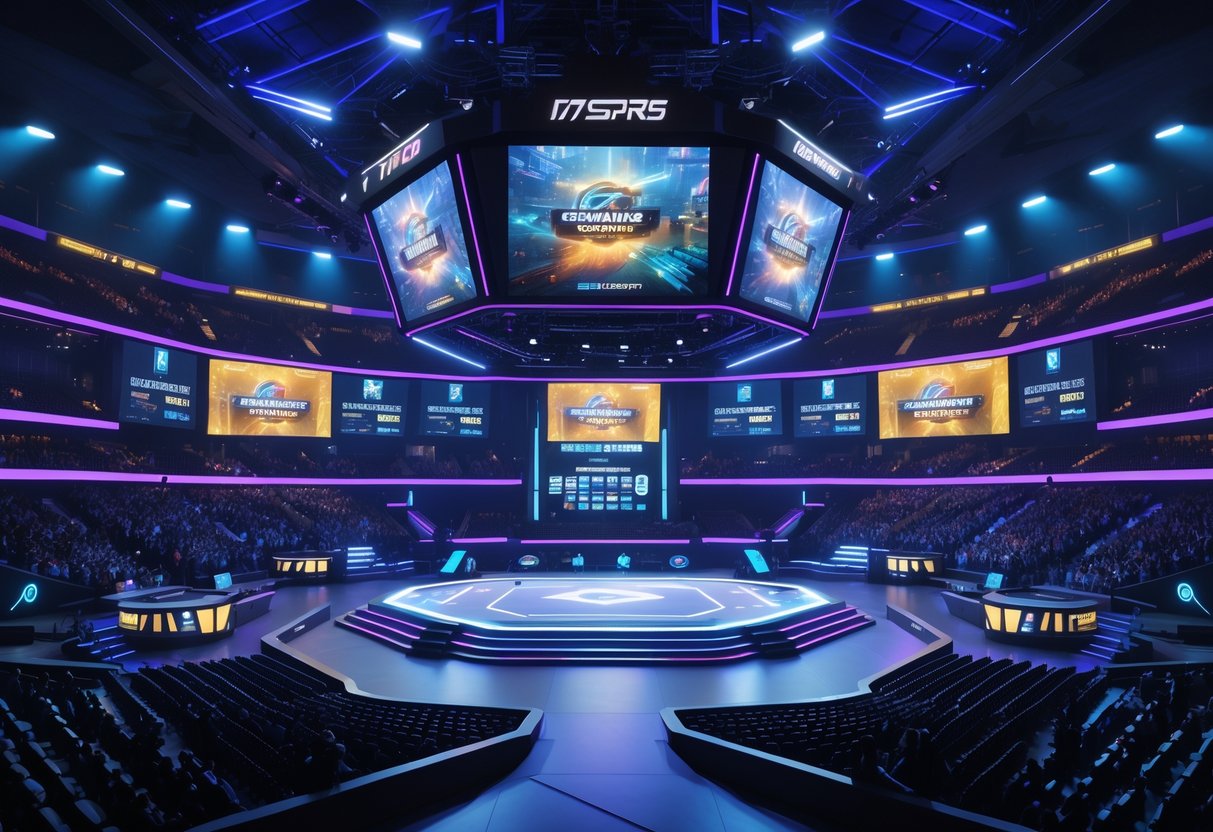
The Finals has two main tournament types: the Major championship with its $100,000 prize pool and hybrid structure, and the ICT events that keep competitive play going all year.
The Major Format
The Grand Major is the biggest event of the year. It’s set for November 28-29, 2025 at DreamHack Stockholm and offers a $100,000 prize pool.
Organizers use a hybrid elimination format, mixing different tournament styles. Teams have to get through closed qualifiers before reaching the main stage.
Key Major Features:
- Annual championship tournament
- LAN (offline) event
- Teams from around the world
- Broadcast with pro-level production
The event has several stages. Teams move up from regional qualifiers to the main event, so both amateurs and pros have a shot.
ICT Event Structure
ICT events fill the calendar with regular competition between the big championships. These tournaments keep the scene active year-round.
ICT formats are all about accessibility. Teams can sign up for weekly events that build toward bigger seasonal showdowns.
ICT Tournament Elements:
- Weekly competitions
- Multiple skill divisions
- Online qualifiers
- Regional tracks
These events stick to standard elimination brackets with best-of-three matches. It’s a great way for new teams to get experience and for established ones to stay sharp.
ICT prize pools are smaller—usually hundreds to a few thousand pounds—but they make the scene sustainable without huge sponsors.
Evolution of Tournament Formats in Esports
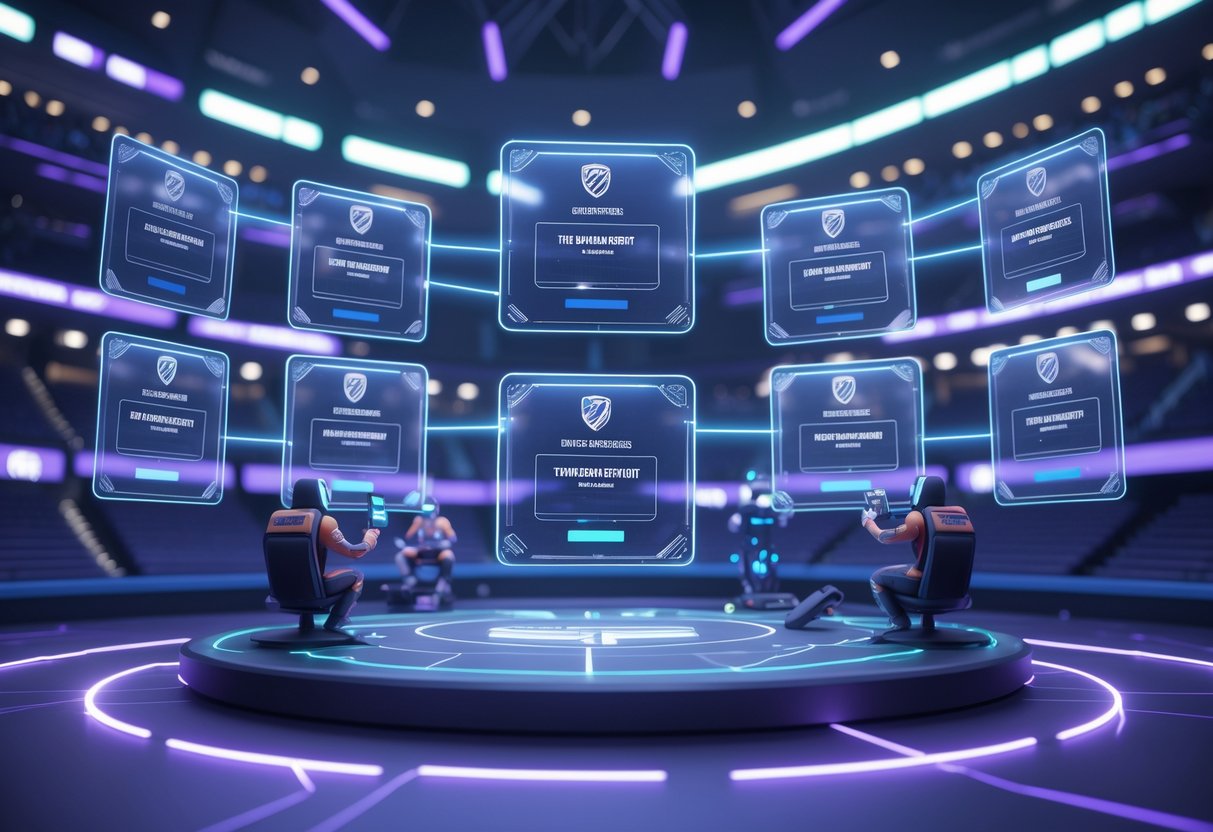
Esports tournaments have come a long way. Organizers started with basic single-elimination brackets but now use complex, multi-stage setups to maximize viewer engagement and fairness.
Modern formats blend old-school sports structures with digital-first innovations like Swiss seeding and double-elimination brackets.
Historical Examples
Early esports competitions took a lot from traditional sports. In the 1990s and early 2000s, single-elimination brackets ruled the scene.
These formats felt simple, but honestly, they were pretty brutal—one loss and you were out.
Fighting game communities shook things up with double-elimination brackets. Suddenly, players got a second chance through lower brackets.
This change led to more matches and some wild comeback stories.
Round robin formats also started gaining traction in league competitions. Games like League of Legends adopted this setup for their regular seasons.
Every team faces every other team, so you get these ongoing storylines that last for months.
Counter-Strike tournaments brought in Swiss seeding to handle bigger pools of teams. In this format, teams with similar records play each other in each round.
Swiss seeding tries to keep things fair while not dragging tournaments out forever.
As events got even bigger, organizers started mixing things up. Major tournaments now blend formats like:
- Group stages using round robin or Swiss
- Playoffs with single or double elimination
- Grand finals that sometimes include special bracket reset rules
Future Trends
Organizers keep testing out new, viewer-friendly ideas. Best-of-one matches are making a comeback in group stages to keep things moving.
Shorter matches seem to hold the audience’s attention better during those long tournament days.
Regional integration is picking up speed. Qualifiers now stretch across multiple continents.
Online preliminaries feed into offline finals, which cuts travel costs but still keeps the competition fair.
Bracket resets in grand finals have become pretty standard. If a lower bracket team makes it to the end, they have to win two series against the upper bracket champs.
That way, undefeated teams keep their edge, but there’s still a shot for a huge comeback.
Dynamic seeding based on recent performance is starting to push out the old static rankings. Teams now fight for better placements by keeping up strong results, not just relying on past glories.
Mobile and console esports are shaking up formats, too. These platforms favor quick, rapid-fire matches over long series—probably because people’s attention spans are just shorter on phones and consoles.
Frequently Asked Questions
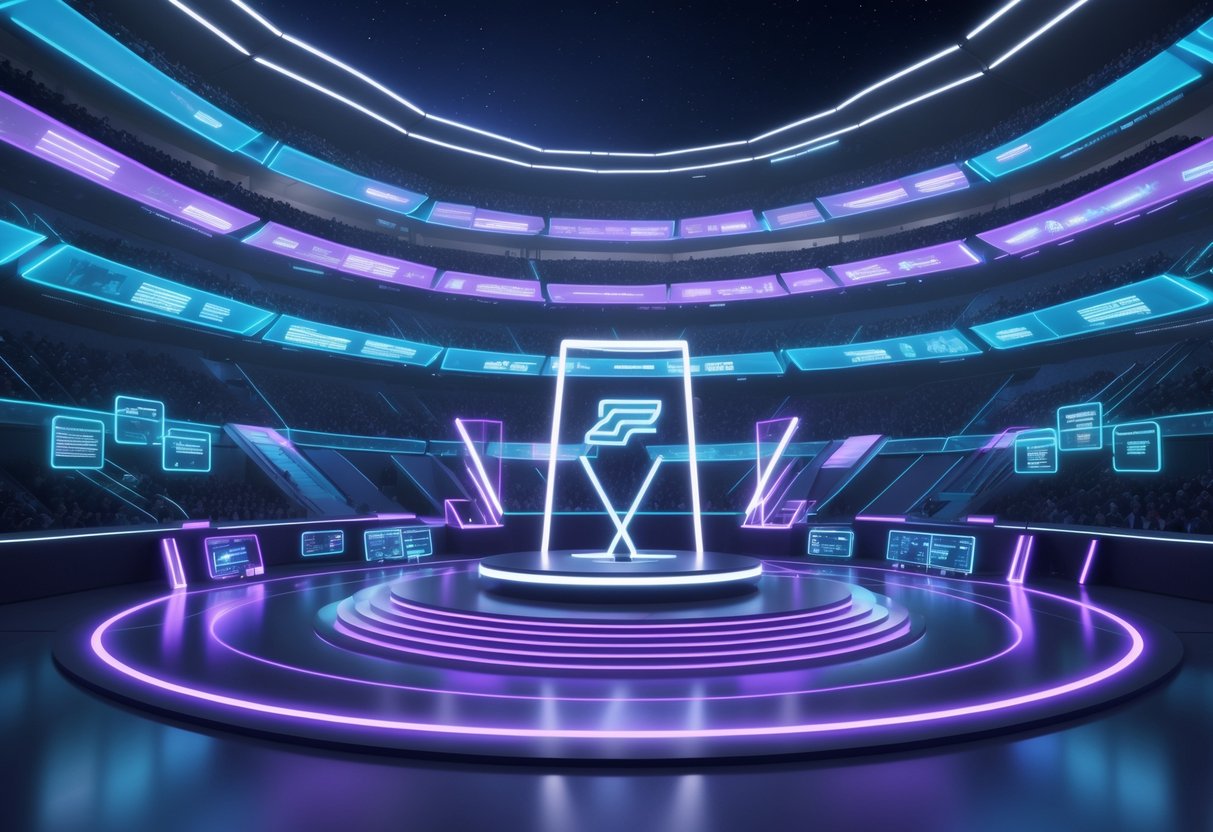
Players usually ask about team sizes and match formats when they’re just starting The Finals. Tournament qualification works by earning Win Points through placements, and you climb through six badge tiers, from Bronze to Emerald.
How many teams participate in the Finals tournament?
Each tournament puts four teams into the mix, competing in a 3v3v3v3 format. That’s 12 players all battling at the same time across three rounds.
This setup lets several teams fight it out together instead of the usual one-on-one matchups. Teams have to outlast each other with smart play and eliminations.
What is the format of the matches during the Finals?
The Finals uses a Cashout Tournament format with limited respawn credits. Matches always run for three rounds, where teams try to secure objectives and knock out their rivals.
You’ll see the signature 3v3v3v3 setup here, with four squads clashing at once. The tournament focuses on fast-paced, destruction-heavy gameplay instead of classic elimination brackets.
Are there any seedings or group stages in the Finals tournament?
The Finals skips traditional seedings and group stages. Everyone enters based on their current badge ranking, not a preset bracket.
Players compete against others at their skill level through the badge system. Bronze badge players face similar opponents, while Emerald badge holders go up against the best.
Could you describe how the knockout stages of the Finals are structured?
Teams can get eliminated in round one, round two, or make it to the final round. The tournament gives out different Win Points depending on how far you get.
If you’re out in round one, you get 2 Win Points. Round two knockouts earn 6 Win Points, and finalists walk away with either 14 points for losing or 25 for winning.
How does a team qualify for the Finals tournament?
Teams qualify by playing in either World Tour or Ranked Tournament modes. Both systems use Win Points from tournament placements to decide rankings.
World Tour offers a more casual way in, with sponsored events and tour stops. Ranked Tournament is the tougher route, with stricter, skill-based matchmaking.
Players have to rack up enough Win Points to move up through the badge tiers. Higher badges unlock better rewards and pit you against tougher competition in future tournaments.
What are the tiebreaker criteria in the Finals if teams have equal points?
I couldn’t find exact tiebreaker details for when teams have the same number of Win Points. Tournament placement seems to be the main thing that decides who ranks higher.
It looks like officials usually check the most recent performance or maybe even the overall stats from the season. If you want to keep your badge progress, it’s probably best to keep showing up for tournaments and play as consistently as you can.


